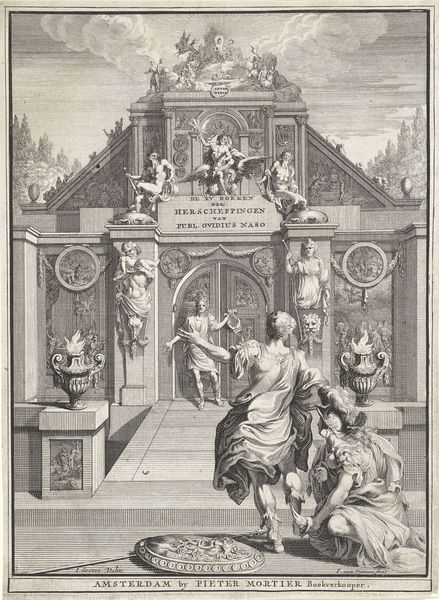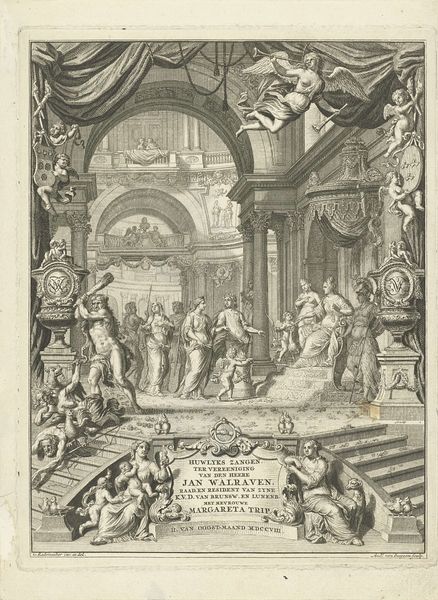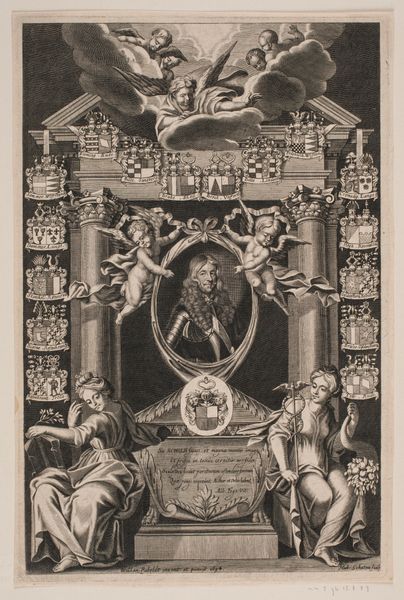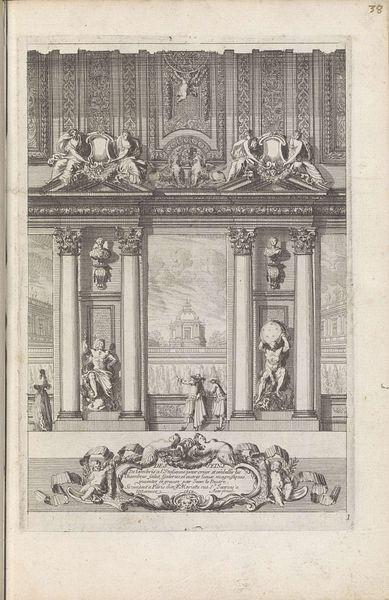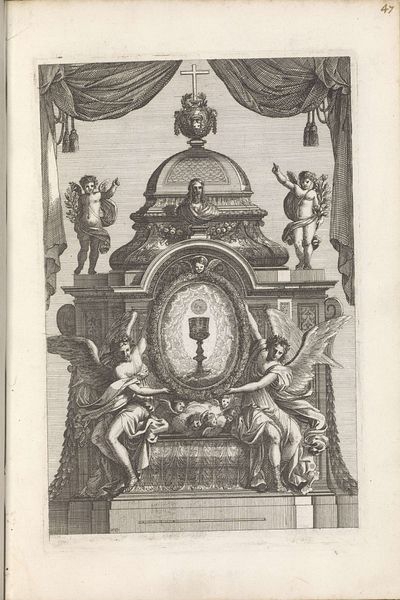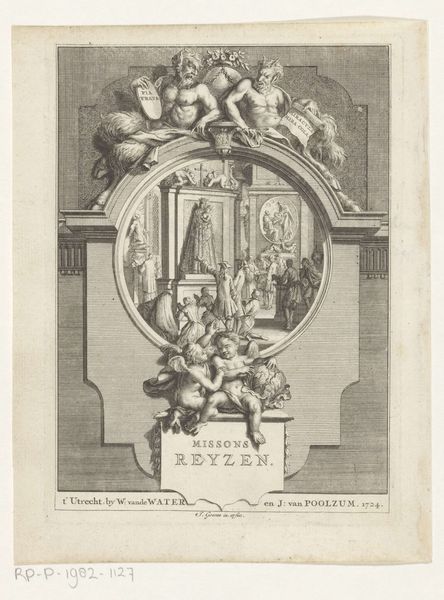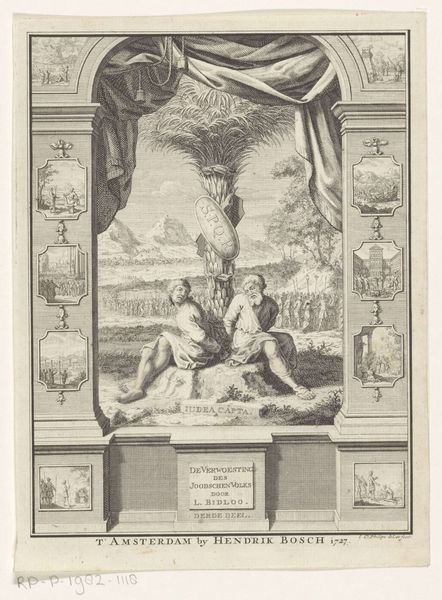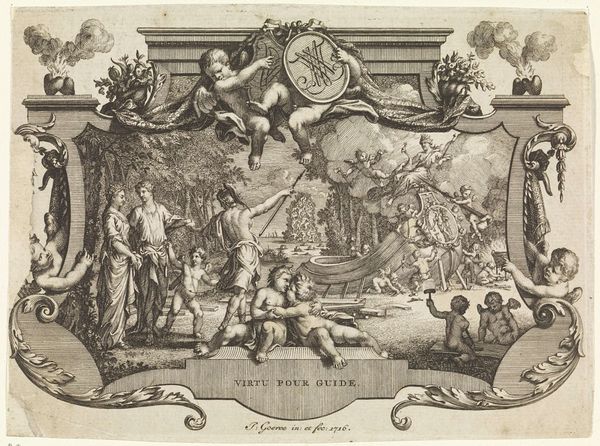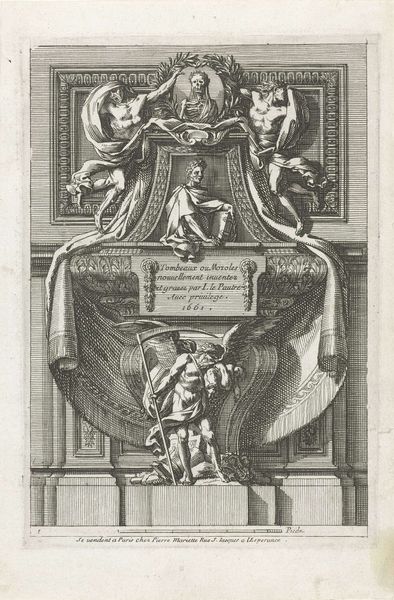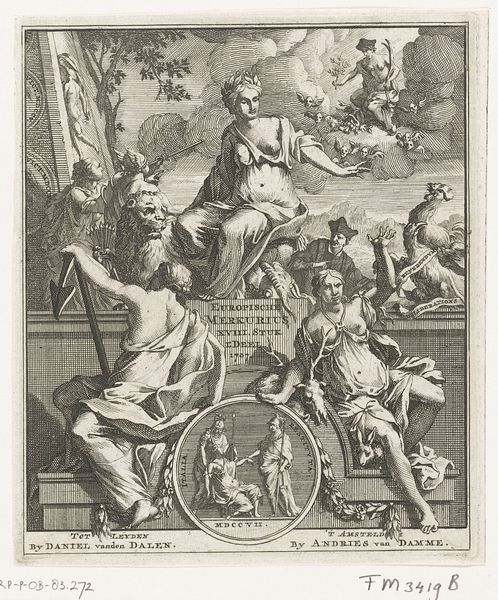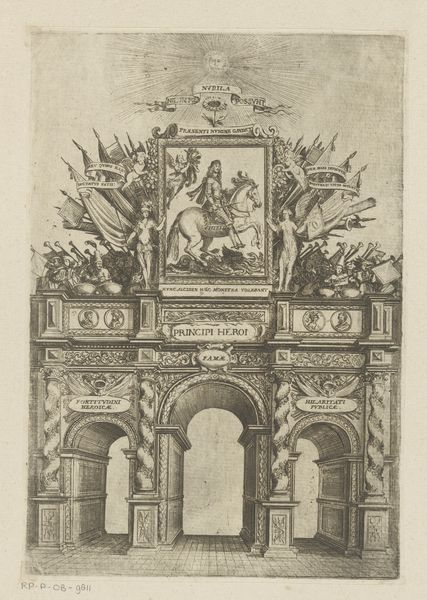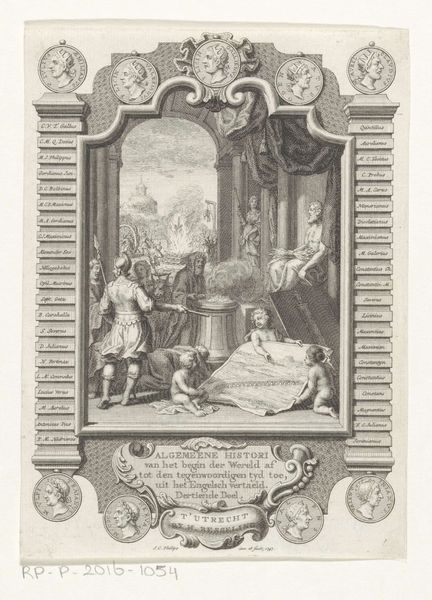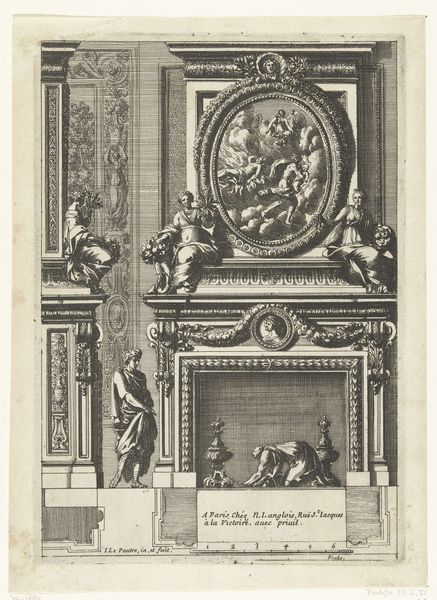
print, engraving
#
allegory
#
baroque
# print
#
pen illustration
#
old engraving style
#
pen work
#
history-painting
#
engraving
#
calligraphy
Dimensions: height 170 mm, width 137 mm
Copyright: Rijks Museum: Open Domain
Editor: This is "Triumph Arch for Poetry," an engraving by Jacob Folkema from around 1725. The density of detail is incredible. It seems to overflow with allegorical figures. What stories and cultural memories do you think it’s trying to capture? Curator: Precisely! The arch itself is a symbol, right? An entry point. Look at how the images inside become almost a gallery within the print, and then see how that blends into a wider symbolic architecture. Folkema uses these layers to build complex meaning. It isn't simply about 'poetry', but how the poet navigates historical memory and societal expectations to reach immortality. Do you notice how this 'pathway' is guarded, blessed, adorned with images that relate to power, love, death, history, and the self? Editor: The figures really do dominate, I see, each panel shows different allegorical characters, what appears to be historical war scenes and symbolic representations of human figures and death. Curator: Note too the honeycomb beside the central cartouche. What connotations would this hive bring for an eighteenth-century Dutch viewer? Would it echo industriousness, cooperation, and maybe the sweetness of shared knowledge, contrasting against the background of war that is behind the entrance to immortality? Consider how poetry, for the artist, could offer not just artistic freedom but potentially moral and social order as well. Editor: So it is a reminder that we should be considering not just our actions but how will those actions and memories affect the next generations. So, is Folkema saying poetry has the power to transcend and teach? Curator: In essence. This engraving captures the symbolic potency assigned to creative work and reminds us how symbols are employed in the making and distribution of artwork, retaining resonance and meaning over the course of generations. Editor: That’s amazing to think about, almost like time capsules of symbolism!
Comments
No comments
Be the first to comment and join the conversation on the ultimate creative platform.
